Index
![]()

Review: Reference design, but still a winner
EVGA’s GTX 690 we’re reviewing today is no different than the reference model of GTX 690, so everything you’ve learned about the reference card applies here as well.
Apart from its standard GTX 690, EVGA offers a special model showcased a few days ago – GTX 690 Hydro Copper.
In general, you shouldn’t expect to see many non-reference GTX 690 cards around. Quite understandably, as most users won’t need it due to the already excellent reference design. So, we’re locked and loaded to confirm it once more with help from EVGA’s GTX 690.
GTX 690 uses GK104 GPU, which is a part of Kepler family. Nvidia did a great job and Kepler beats the earlier generation, Fermi, in both power consumption and thermals. These two advantages in particular made it possible to build a dual-GPU card that’s quieter than all the earlier dual-GPU cards, while being faster at the same time.
Base GPU clock stands at 915MHz, which is 9% lower than the GTX 680’s Base Clock (1006MHz). In fact, this is the only difference when compared to GTX 680’s GPU. The rest of the specs reveal that the GK104 use on GTX 690 is identical to the one on GTX 680 cards. There’s no difference in memory either – the bandwidth is identical. The memory runs at 6008MHz (GDDR5) and each GPU has 2048MB of GDDR5 at its disposal. This suggests that performance is comparable to that of GTX 680 cards in SLI mode. However, GTX 690 does have its advantages, and we’ll discuss them in more detail on the following pages.
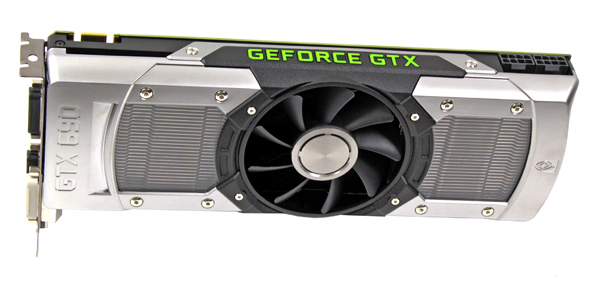
Below you see GPUZ screenshot showing that EVGA’s GTX 690 runs at reference clocks. While EVGA could have personalized the cooler, why fix something that ain’t broken? The only custom thing on the card is controllable lighting underneath the GEFORCE GTX sign.
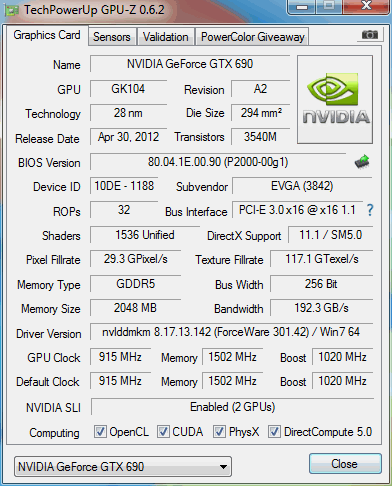
EVGA threw in two 6-pin-to-8pin power cables that look great combined with GTX 690. The only thing we missed is a gift game, something which nobody seems to bundle these days.
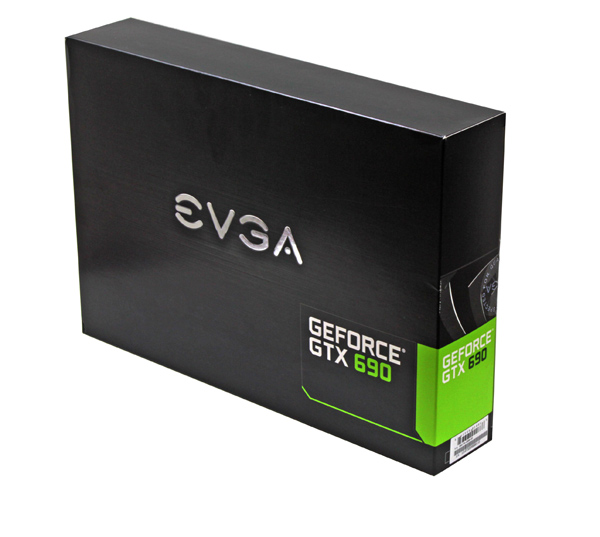
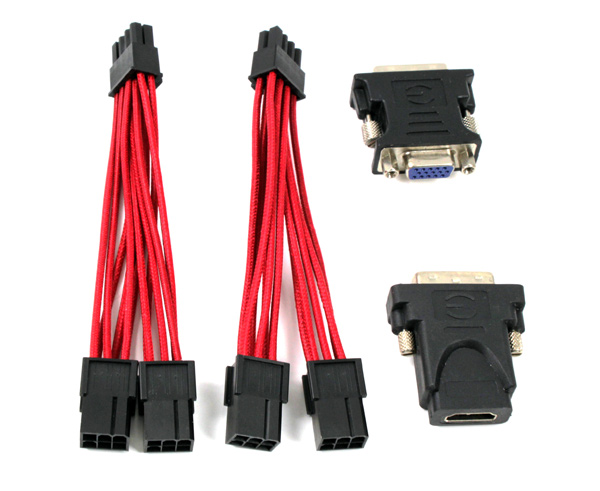
In the box we also found a poster that we’ve seen with some earlier EVGA graphics cards.
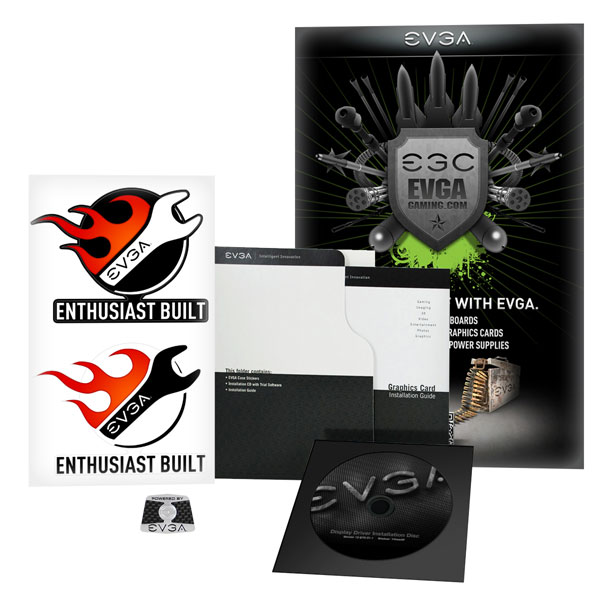
The GTX 690’s cooling really deserves praise because it’s quiet, effective and unique. No wonder Nvidia likes to show this card off so much.
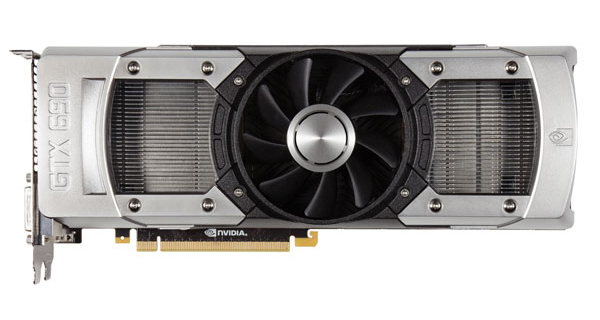
The cooler is two slots wide. On top of the cooler you’ll find GEFORCE GTX logo, which EVGA strapped with controllable lighting.

The fan is within a magnesium bracket. Apart from looking better, this offers superior thermal and audio characteristics from widely used plastics and aluminum.

The LED under the sign „GEFORCE GTX“ shines constantly but EVGA allows users to play around a bit. The picture below shows the LED controller.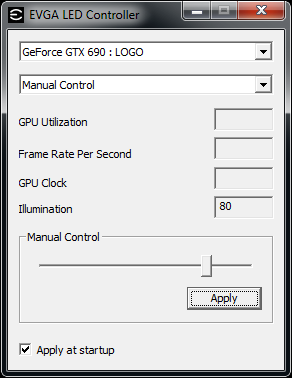
The first drop down let us select the card logo we want to adjust (option for Quad systems). The second drop down let us select various different options. IMPORTANT NOTE: Anything other than manual control REQUIRES EVGA Precision X to be running in the background! For FPS Monitoring make sure that you have FPS monitoring enabled in EVGA Precision X.
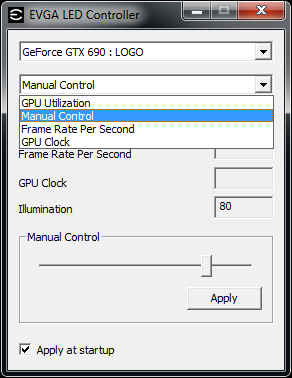
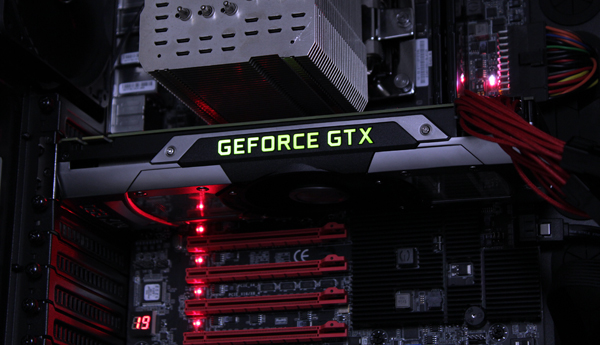
Each centimeter of the cooler is stylized to look its best. The side panels are made of polycarbonate and let users peek into the heatsink.
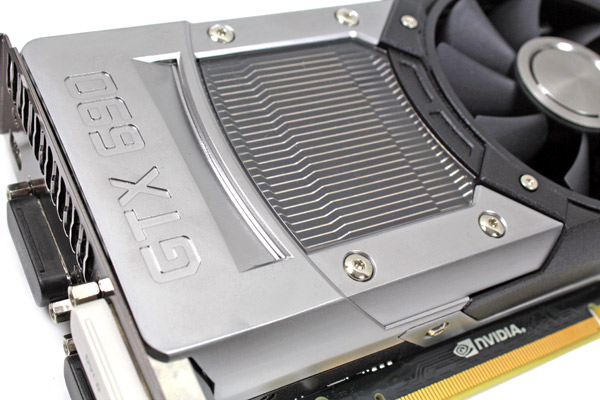
The cooler actually has two separate heatsinks. The fan is placed in the middle, so as to cool both heatsinks at the same time. 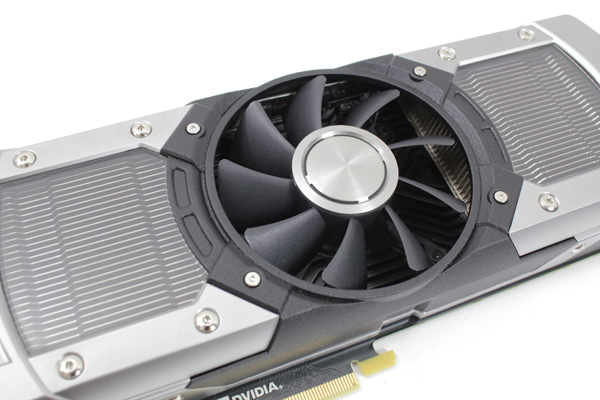
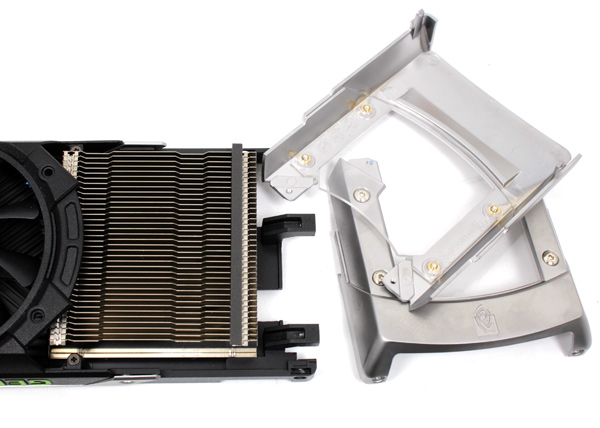
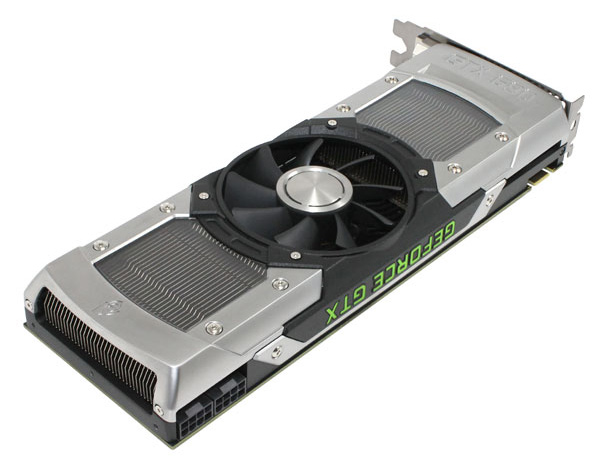
Both heatsinks sit on nickel-plated vapor chambers. Vapor Chamber technology enables for making compact coolers, and GTX 690 is a perfect example of this.
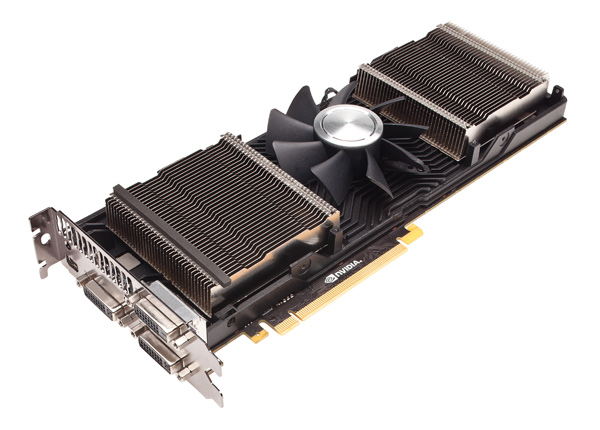
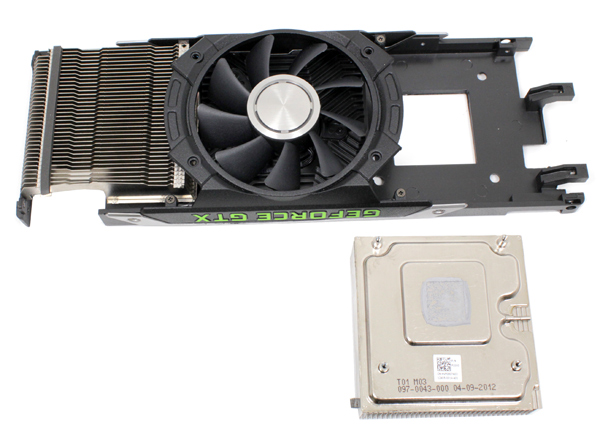
Two GK104 graphics chips are linked via PCI-Express 3.0 SLI bridge chip (PLX design with 48 lanes). As for power supply, Nvidia used 10-phase power for the two GPUs and two phases for memory. The PCB is made of ten layers with 2OZ of copper per layer. All the components are low-profile, so that the cooler could sit on them comfortably and decrease turbulence and noise.
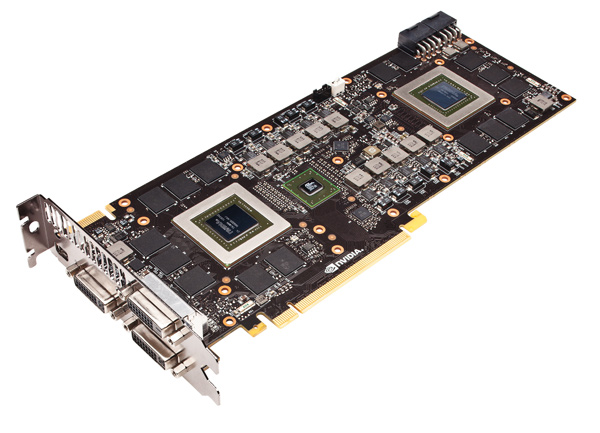
The card uses Samsung GDDR5 memory. The chips (model K4G20325FD-FC03) are specified to run at 1500 MHz (6000MHz GDDR5 effectively).
Complexity of the design is evident from the quite populated back of the PCB.
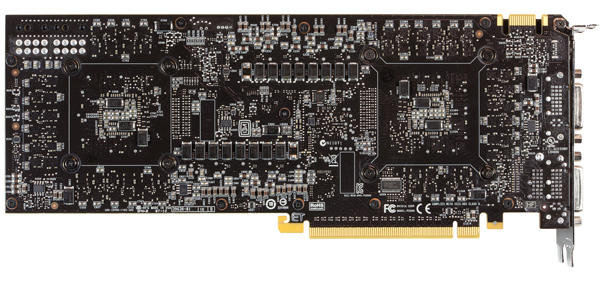
GTX 690 has four video connectors and all can be used simultaneously. The card has plenty of power to run 3D on three displays. The DVI connectors, all three of them, are dual-link capable. Two of them are DVI-I and come with black protective caps, which means that they won’t support an analog VGA display. HDMI sound chip is in the GPU and that card comes with a DVI-to-HDMI dongle.
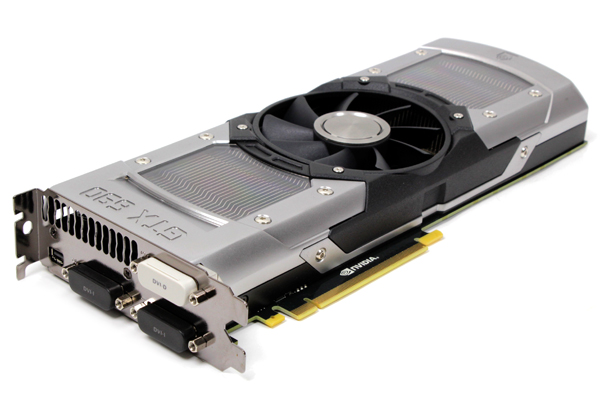
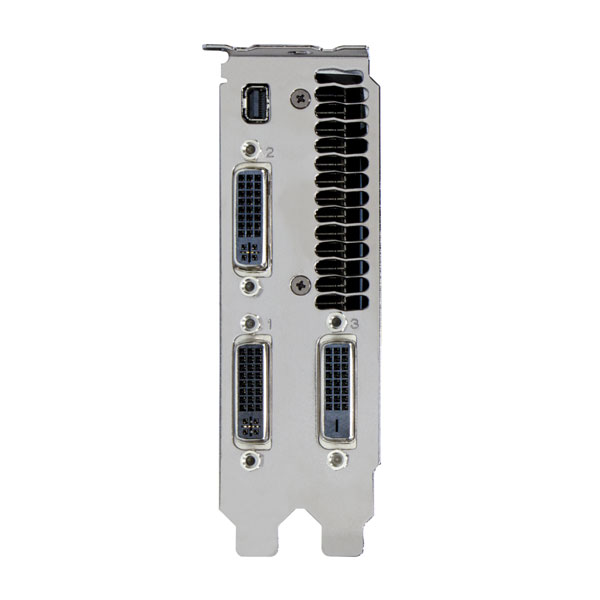
GTX 690 comes with a single SLI connector, meaning it can run in quad SLI.
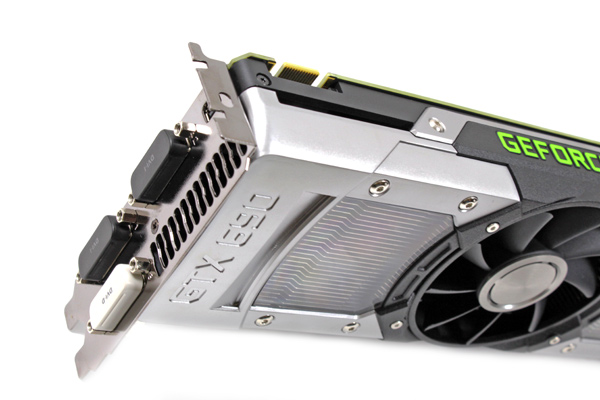

Motherboard: EVGA X79 FTW
CPU: Sandy Bridge-E Core i7 3820 (3.6GHz)
CPU Cooler: Thermalright HR-02 (Thermalright-Europa Distri www.PC-Cooling.de).
Memory: 8GB ADATA DDR3 1600 XPG Gaming series
Harddisk: OCZ Vertex 2 100 GB
Power Supply: CoolerMaster Silent Pro 1000W
Case: CoolerMaster Cosmos II Ultra Tower
Operating System: Win7 64-bit
Nvidia 301.34-desktop-win7-winvista-64bit-english-whql
amd_radeon_hd_7800_8.95.5_win7-64
12-3_vista_win7_64_dd_ccc.exe
Crysis 2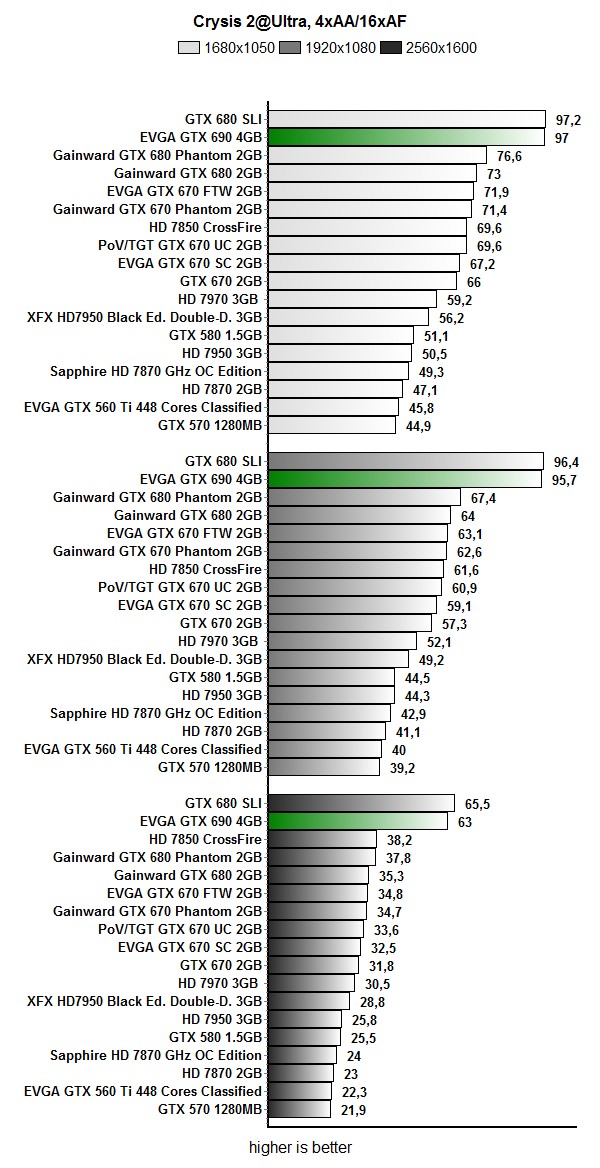
Metro 2033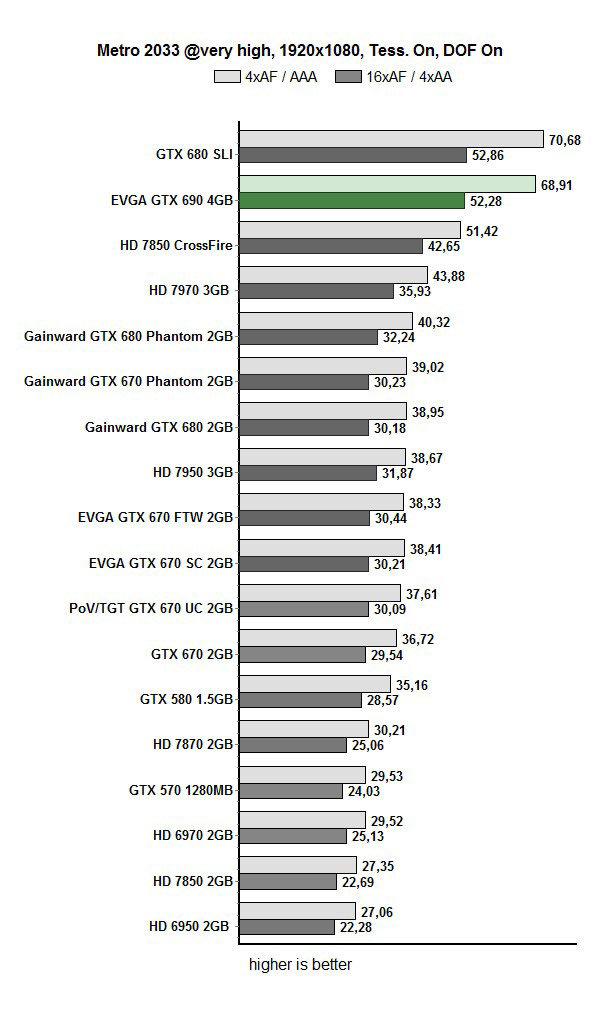
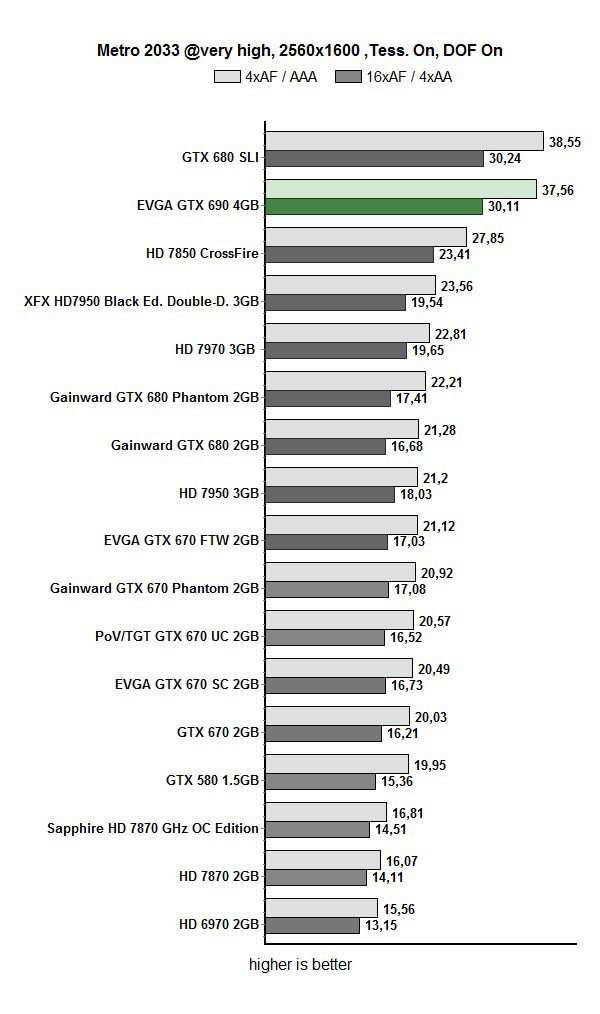
Aliens vs Predator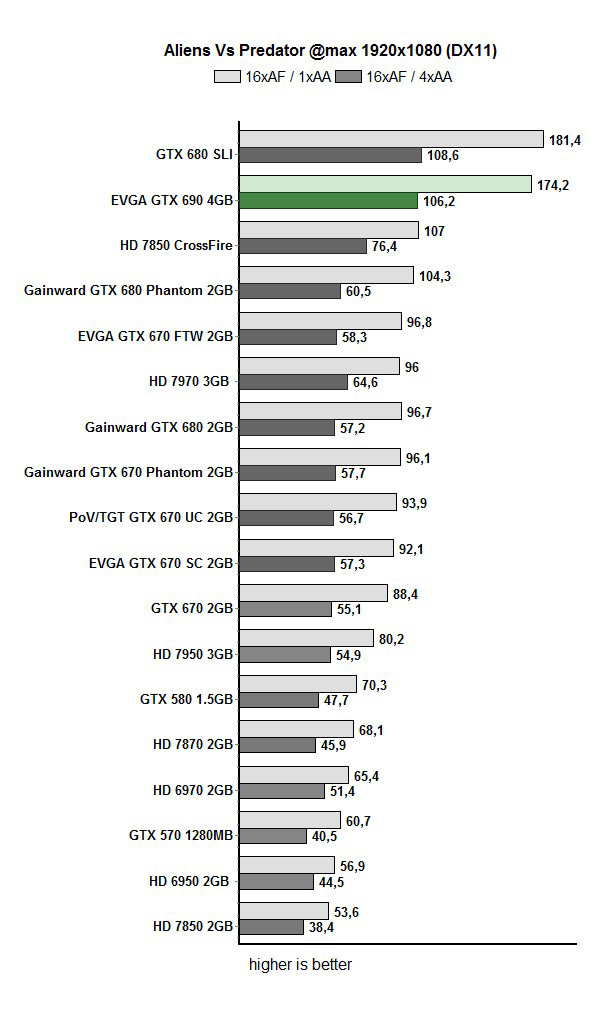

Unigine Heaven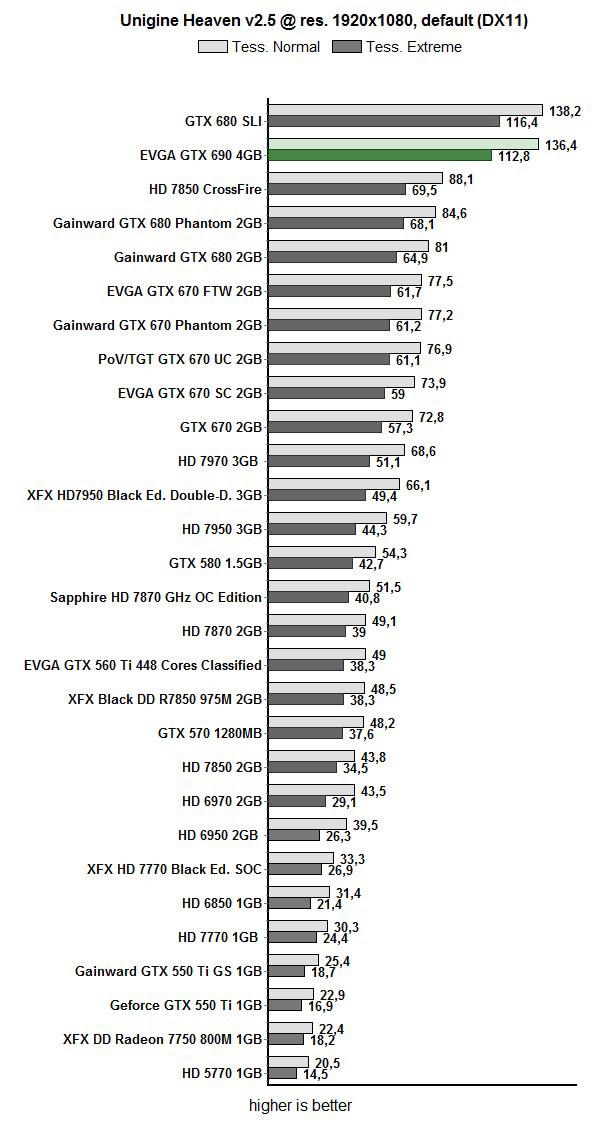
Although this is a dual GPU graphics card, we were pleased with overclocking. Reference GPU Base clock is 915MHz, but we used EVGA’s Precision X to boost it +135MHz. We had even more fun with the memory and pushed it from reference 1502MHz to 1752MHz.
In order to provide better cooling while we’re squeezing out more juice from the card, we maxed out the fan in PrecisionX, which was 95%RPM. Thermals on both GPUs were just fine after our overclocking, although the fan ran loud when at 95%RPM.
EVGA already made a water block for its GTX 690 Hydro Copper graphics card, and users will be able to buy it separately. If overclocking is your deal, then we’d definitely recommend buying the block.
The reference cooler is really a quality part so reference clocked GTX 690’s really won’t have problems with cooling or noise. When idle, GTX 690 is almost inaudible.
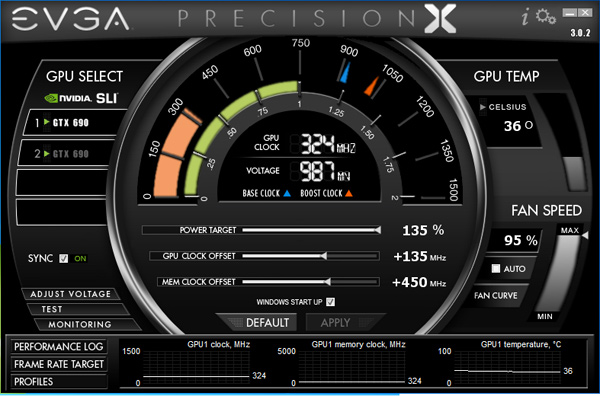
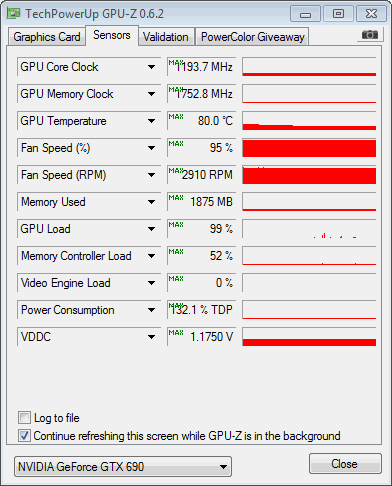
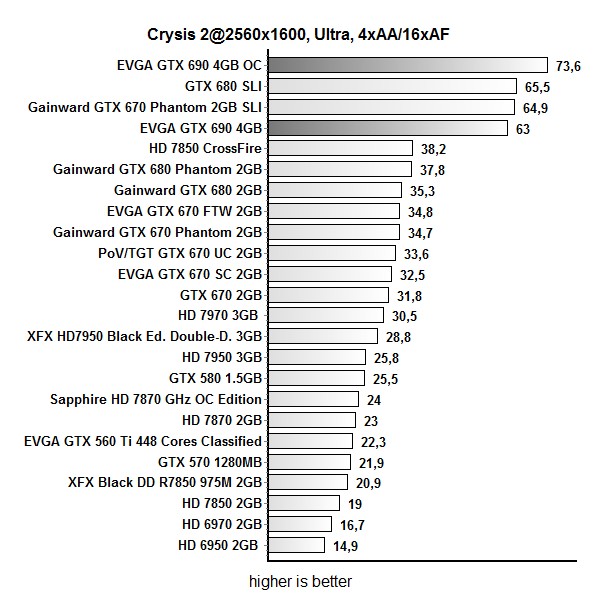
When the fan was set to AUTO, reference clocked card didn’t exceed 80°C. At the same time, the fan didn’t exceed 2050RPM, which kept it quiet as well. GTX 690 is about as quiet as a single GTX 680, but definitely quieter than two GTX 680s in SLI.
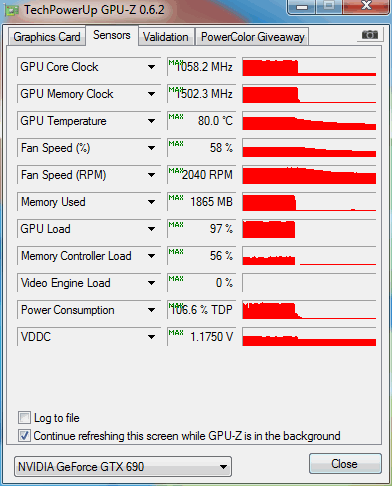
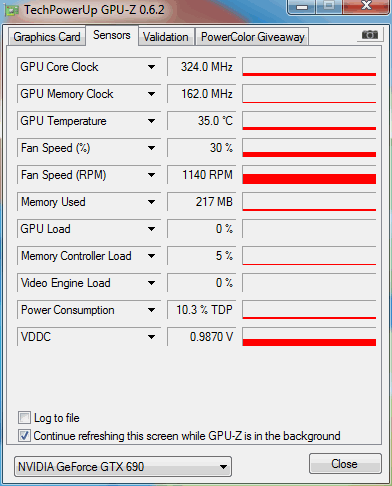

Like the rest of Nvidia’s partners, EVGA first launched the reference GTX 690. Later on, Nvidia gave selected partners a green light to come up with non-reference coolers, so EVGA made a water-block for its GTX 690 Hydro Copper. Since Hydro Copper is still not available on the market, we got a GTX 690 based on the reference design.
That EVGA’s GTX 690 is based on the reference design is definitely not a downside this time around. Namely, Nvidia did a really good job and the GTX 690 came out better than many expected.
When compared to two GTX 680 cards in SLI, thermals and power consumption on GTX 690 are definitely better. The GTX 690’s cooler is quieter and power consumption is lower.
In the past we’ve had scenarios where dual-GPU cards ran slower than two single-GPU cards in SLI. However, GTX 690’s performance is breathing down GTX 680 SLI’s neck. GTX 690’s Base clock is 91MHz lower than the GTX 680’s (9% difference). Thanks to the superior thermals however, Boost clock is only 39MHz lower than the GTX 680’s (4% difference).
GTX 690 is currently the fastest graphics card around and Nvidia decided to cash in. The card launched at $999, which pretty much broke all the previous price records. Nvidia justifies the price by saying that it didn’t skimp on quality of components, which enabled them to squeeze out the maximum from two GK104 chips on a single PCB.
EVGA GTX 690 graphics card goes for about €1000 in EU, which is about the price you’ll pay for two EVGA GTX 680 cards.
If you have the cash to buy two GTX 680 cards, you may want to consider getting a GTX 690. One thing is for certain, GTX 690 is the best high-end card we’ve had on our test, which makes our award a no-brainer, really.

